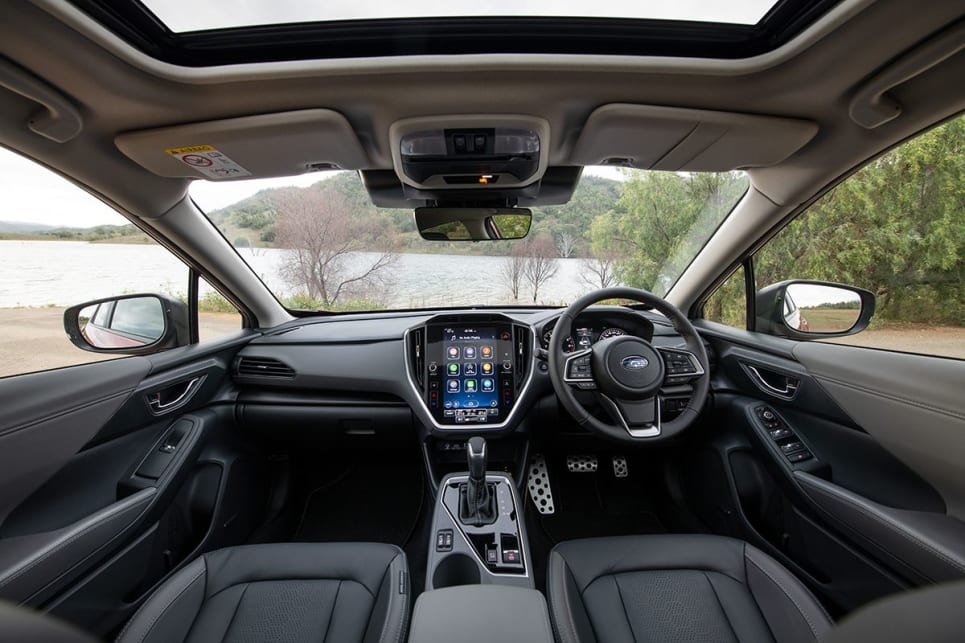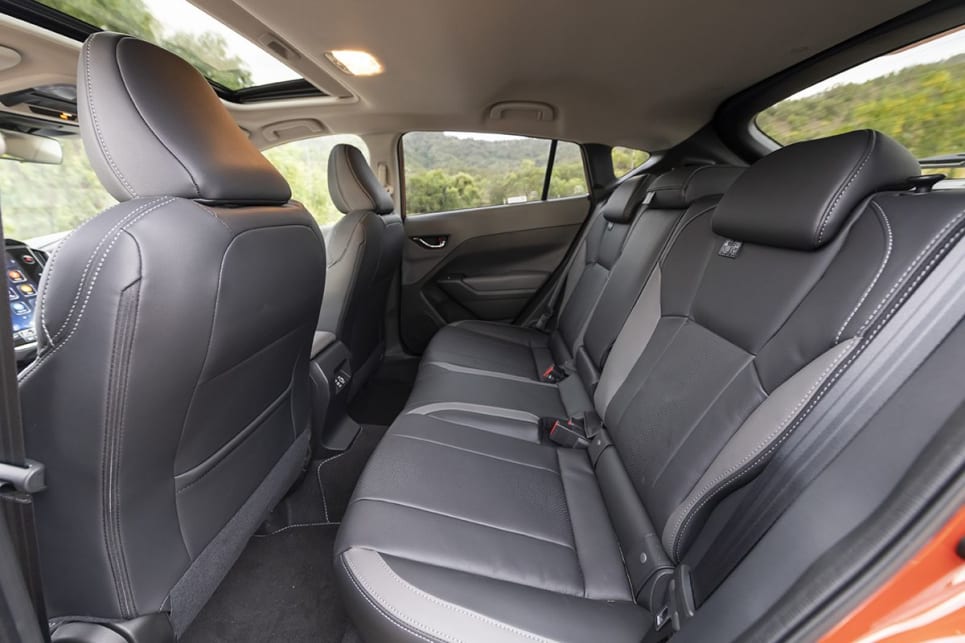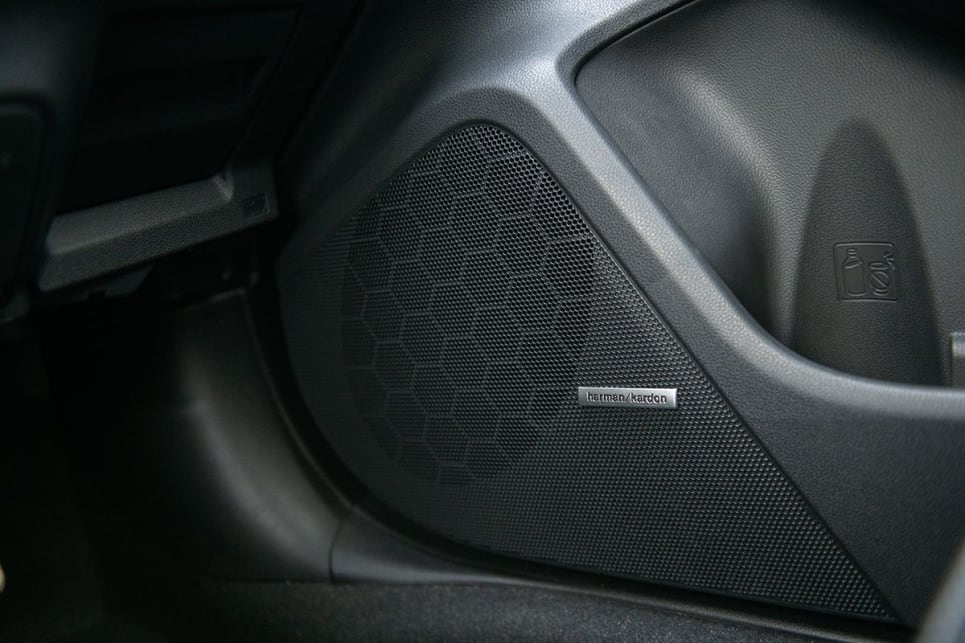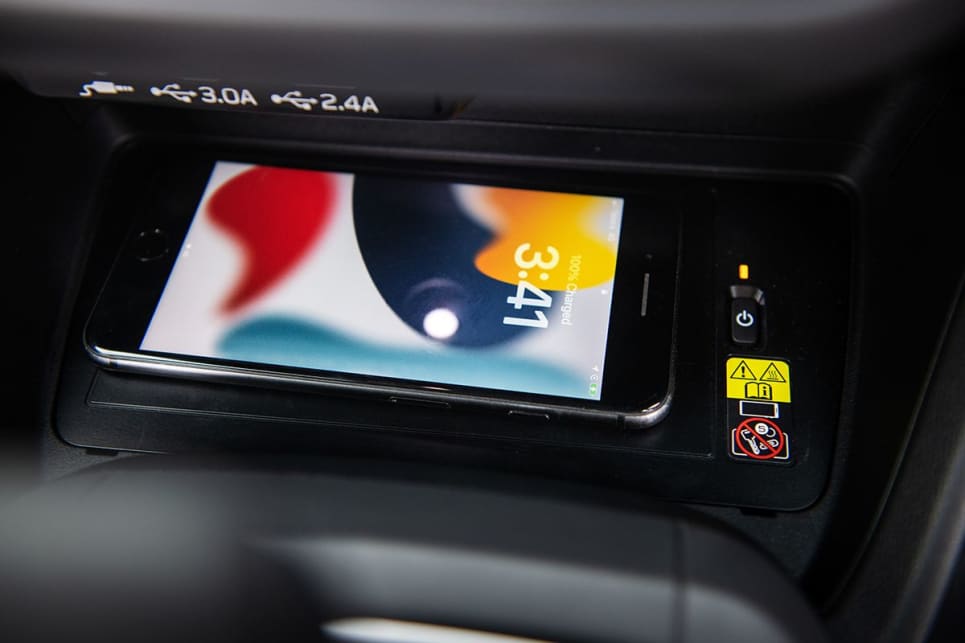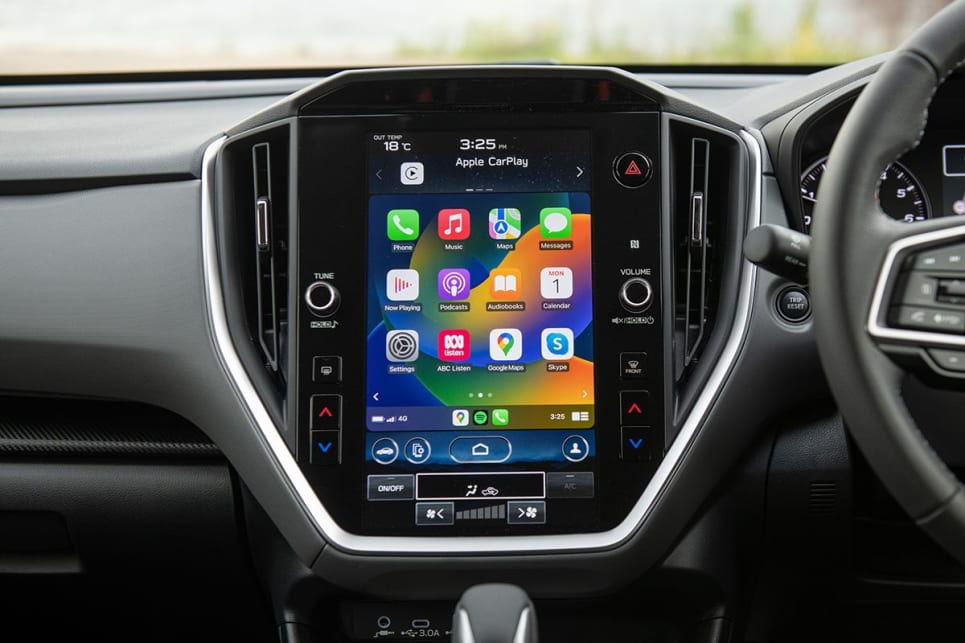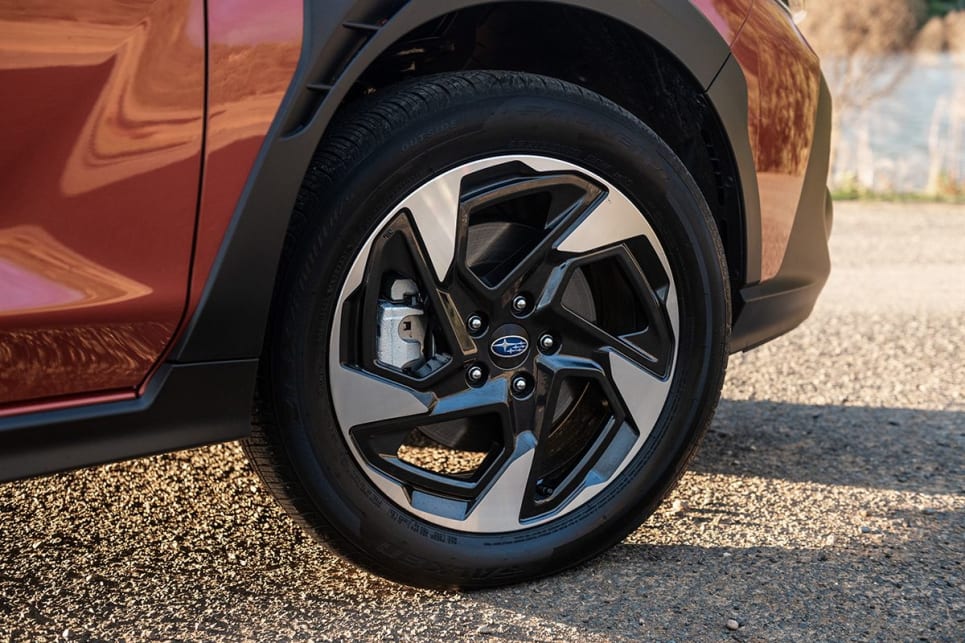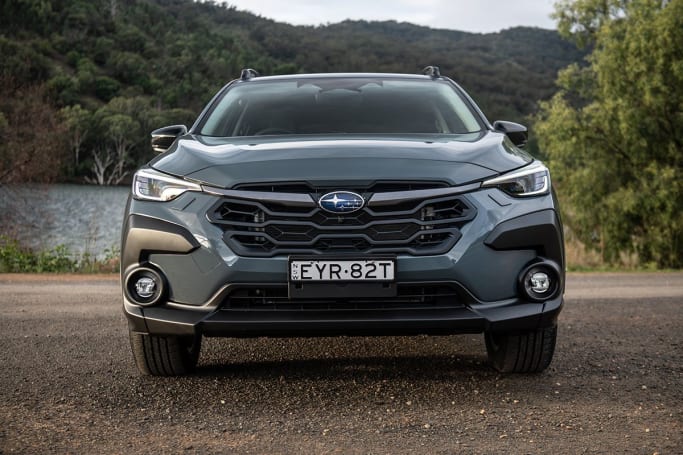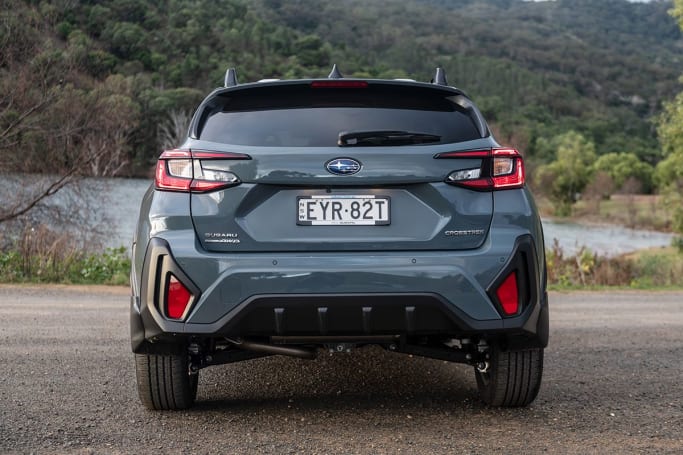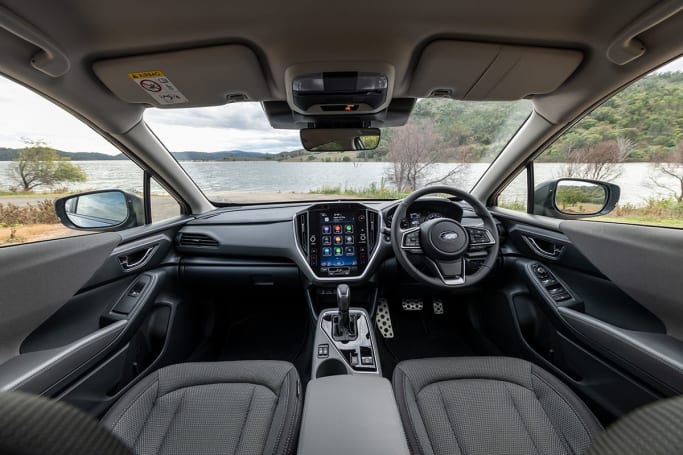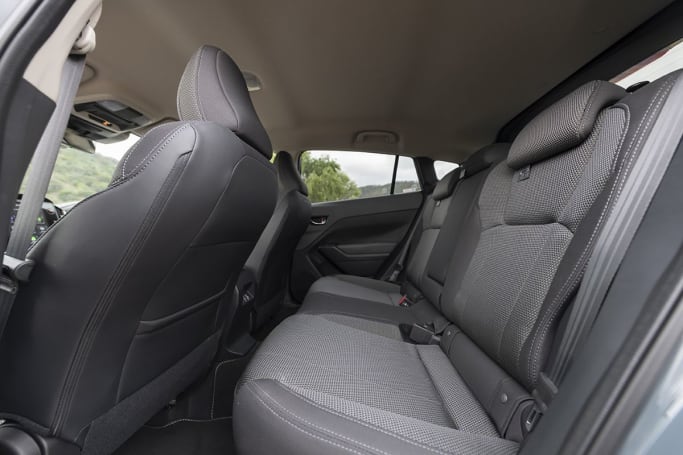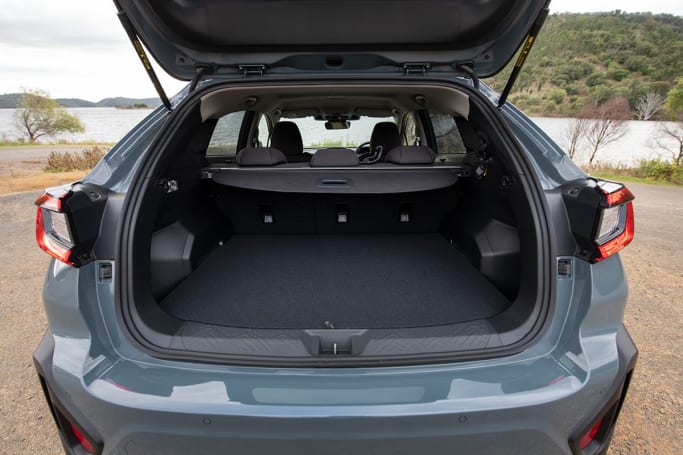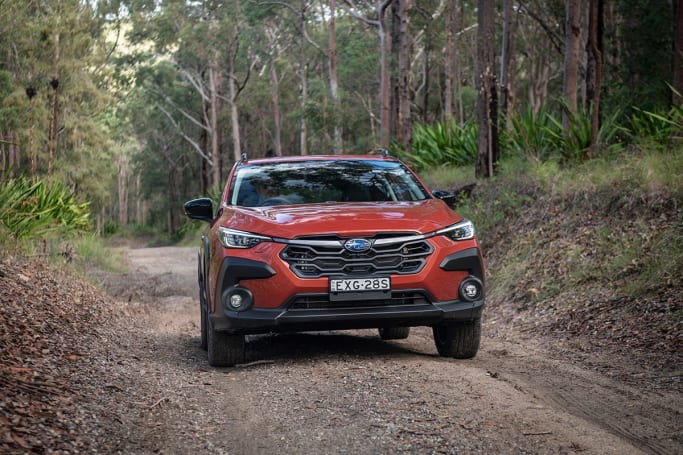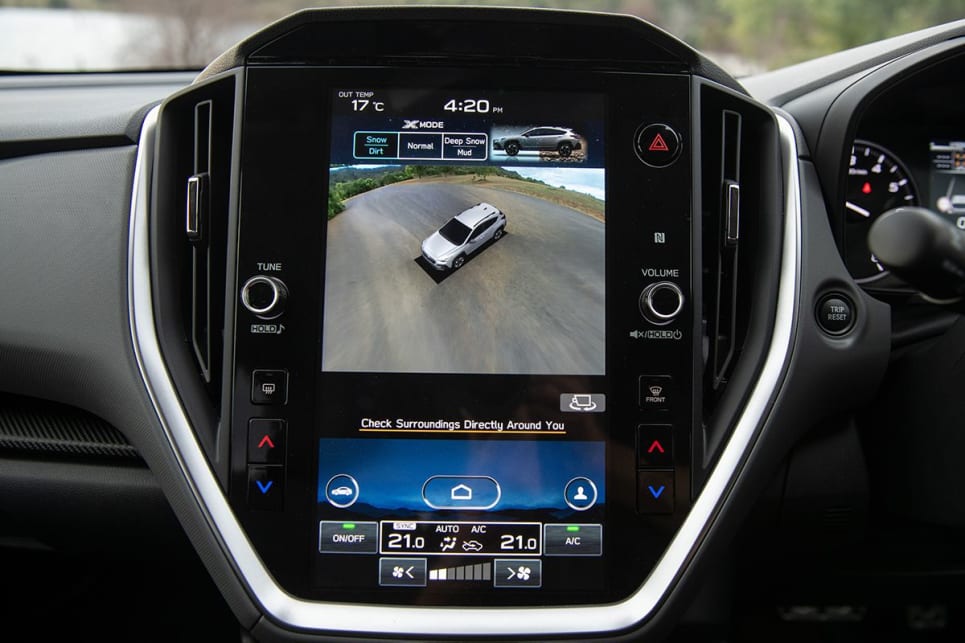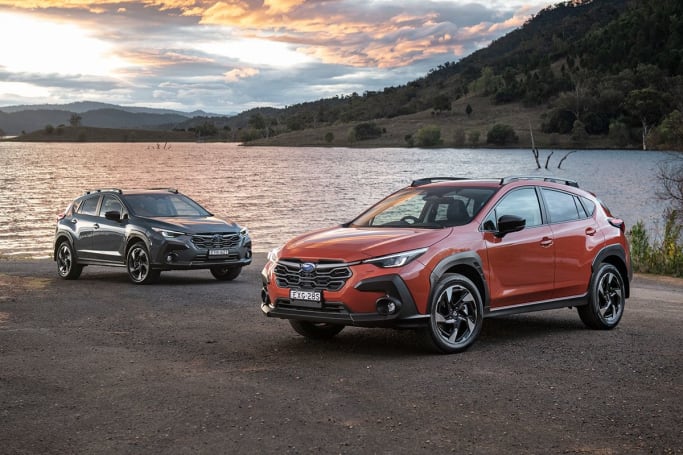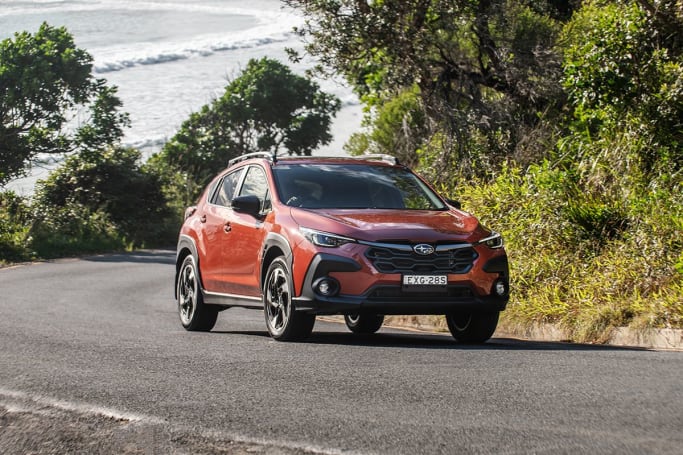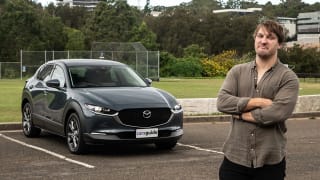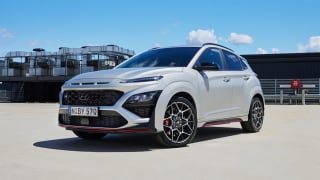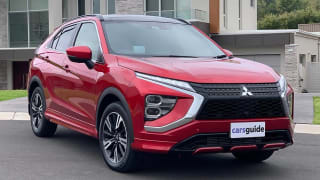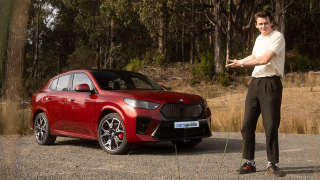The name is new but Subaru has stuck with a familiar line-up for this new-generation model. There are two powertrain options - a 2.0-litre four-cylinder petrol engine and a mild hybrid version - and four trim lines.
However, prices have risen significantly across the range, which certainly isn’t isolated to Subaru but the Crosstrek does highlight the industry trend. Case in point, the entry price to the Crosstrek range is $1800 more than where the XV ended up in December 2022, but is more than $5000 dearer than it was 12 months ago.
The range now begins with the Crosstrek 2.0L at $34,990 (all prices exclude on-road costs), which comes well-equipped for the price. Exterior highlights include 17-inch alloy wheels, LED headlights, dusk-sensing headlights and black roof rails.
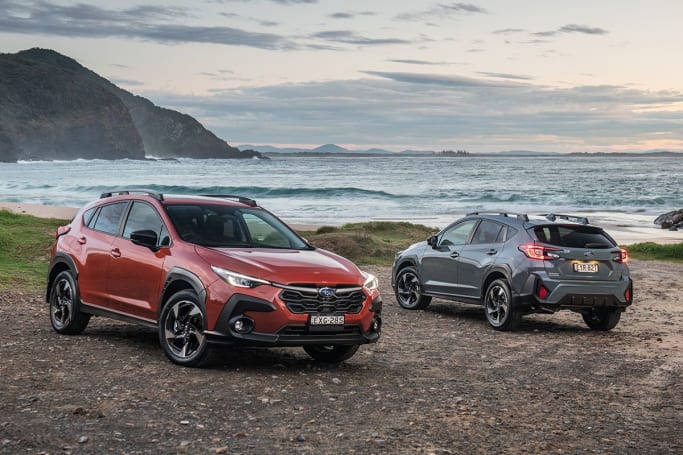
Inside you’ll find cloth-trimmed seats, dual-zone climate control, USB-C and USB-A connections, a six-speaker stereo and an 11.6-inch tablet-style multimedia touchscreen with compatible wireless Apple CarPlay and Android Auto, as well as a wireless charging pad.
There’s also a lengthy list of safety features, too big to touch on here but check out the ‘Safety’ section below for all the details.
That specification is largely carried over to the Crosstrek Hybrid L, which is priced from $38,590. That positions it slightly above the $38,490 Crosstrek 2.0R, which takes the 2.0L equipment and adds two-mode X-Mode off-road settings, 18-inch alloy wheels, front and rear wipers with front de-icer (to target the alpine/snow country crowd), self-levelling LED headlights with auto off, front cornering lamps, heated door mirrors, front LED fog lights and dark grey roof rails.
Inside the 2.0R gets premium cloth trim for the seats, a leather-wrapped steering wheel and gear shift, sports pedals, auto-dimming rear mirror, heated front seats and a 10-way power adjustable driver’s seat. It also adds USB-A and USB-C charging ports for the rear passengers, as well as some extra safety features we’ll detail later.
The Crosstrek Hybrid S is the most expensive model in the line-up, starting at $45,090, and is similar in specification to its petrol-powered sibling.
The pinnacle of the range - in terms of equipment - is the Crosstrek 2.0S, priced from $41,490, which builds on the 2.0R with an electric sunroof, leather-accented seat trim, satellite navigation and a 10-speaker Harman Kardon sound system.




